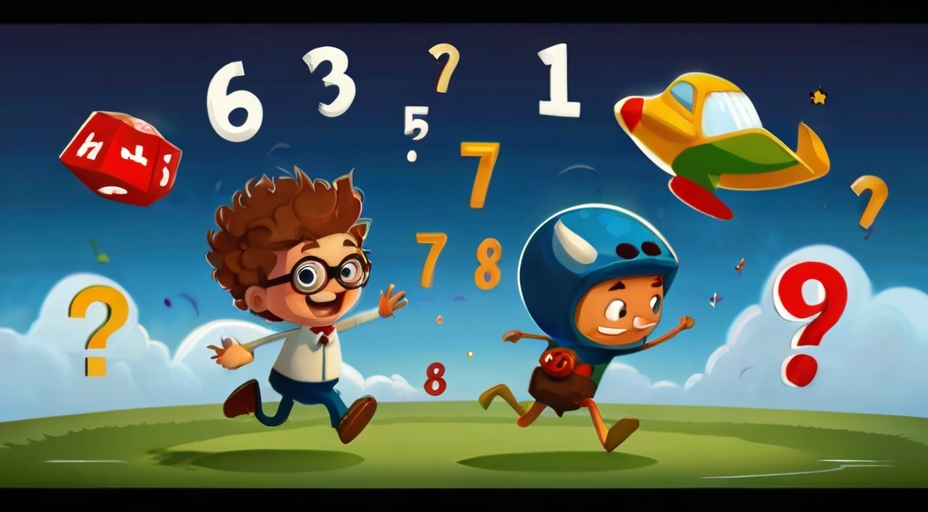
In today’s rapidly changing gaming environment, educational games have become a potent instrument for fostering learning and involvement. Throughout this guide, we’ll guide you step-by-step through the journey of creating an educational game, starting from defining learning objectives and extending to crafting immersive gameplay mechanics.
1. Define Learning Objectives
Before diving into development, it’s crucial to clearly define the learning objectives of your game. What do you want players to learn or achieve? Whether it’s mastering math concepts, improving language skills, or fostering critical thinking, aligning your game mechanics with specific learning goals is essential for its effectiveness.
2. Understand the Target Audience
Identify your target audience taking into account various factors such as age, educational background, and interests.. It’s crucial to customize your game according to their requirements and preferences. For instance, a game intended for elementary school students will have different gameplay mechanics and content in contrast to a game aimed at high school students or adult learners.
3. Select Appropriate Technologies
Consider various criteria when selecting platforms and technologies for your game. Scalability, device compatibility, and accessibility are a few of these. Educational games are still mostly played on PCs, tablets, and mobile devices. However, newer technologies such as virtual reality (VR) and augmented reality (AR) present interesting possibilities for spectacular learning experiences.
4. Collaborate with Educators
Collaboration with educators is essential for creating effective educational games. Consult with teachers, educational experts, and subject matter specialists to ensure that your game aligns with curriculum standards and pedagogical principles. Their insights can help you design meaningful learning experiences and incorporate engaging content.
5. Adapt to Educational Standards
Adhere to educational standards and guidelines relevant to your target audience and subject matter. Whether it’s Common Core State Standards (CCSS) in the United States, the National Curriculum in the UK, or international frameworks like UNESCO’s Education 2030 Agenda, aligning your game with established standards enhances its credibility and utility in educational settings.
Tips for Crafting an Educational Game
- Make learning fun and interactive by incorporating game mechanics such as quizzes, puzzles, simulations, and storytelling elements.
- Provide feedback and rewards to reinforce learning and encourage progress.
- Balance entertainment with educational content to keep players engaged and motivated.
- Ensure accessibility and inclusivity by designing interfaces and gameplay mechanics that accommodate diverse learning styles and abilities.
- Test and iterate on your game design based on feedback from players and educators to continuously improve its effectiveness.
Key Statistics on Educational Games
- The global market for educational games is projected to reach $29.7 billion by 2026, driven by the increasing adoption of digital learning tools.
- Teachers seem to find that using games in the classroom is beneficial: in particular, low-performing students seem to be more motivated by the use of digital games, according to 55% of respondents.

Top Educational Game Mechanics
1. Gamified Assessments and Quizzes
Gamified assessments and quizzes transform traditional testing methods into interactive and engaging experiences. By incorporating elements such as points, levels, and rewards, these games motivate players to test their knowledge and track their progress.
Example: “Kahoot!” is a popular educational platform that gamifies learning through interactive quizzes. Teachers and educators can create custom quizzes on various subjects, and students compete against each other in real-time quizzes, earning points for correct answers. This game mechanic fosters healthy competition and encourages active participation in the learning process.
2. Interactive Simulations and Experiments
Interactive simulations and experiments allow players to explore complex concepts through hands-on experiences. These games provide a safe environment for experimentation and facilitate deeper understanding through interactive feedback and exploration.
Example: “Infinifactory” offers players the opportunity to design and build intricate factory systems to manufacture products within alien environments. Players have the freedom to experiment with different layouts, components, and processes to optimize production and solve puzzles. The game encourages players to experiment with different manufacturing techniques, machine configurations, and production workflows. Through trial and error, players refine their designs and strategies to overcome increasingly complex challenges presented at each level.
3. Story-Driven Narratives with Educational Themes
Story-driven narratives with educational themes immerse players in rich and immersive worlds, where learning is seamlessly integrated into the storyline. These games leverage storytelling techniques to engage players emotionally and intellectually, making learning more memorable and impactful.
Example: “Oregon Trail” is a classic educational game that combines history with adventure in a narrative-driven experience. Players assume the role of pioneers traveling westward on the Oregon Trail, facing challenges such as harsh weather, disease, and resource management. Through the narrative, players learn about American history, geography, and the hardships of westward expansion.
4. Problem-Solving Challenges and Puzzles
Problem-solving challenges and puzzles encourage players to think critically and apply their knowledge to solve complex problems. These games present players with engaging tasks that require analytical thinking, creativity, and persistance to overcome.
Example: “Portal 2” is a popular puzzle-platform game that challenges players to navigate through a series of test chambers using a portal gun. Players must use physics principles and spatial reasoning to solve puzzles, such as redirecting lasers, manipulating objects, and navigating obstacles. Through trial and error, players develop problem-solving skills and logical reasoning.
5. Collaborative Multiplayer Experiences for Social Learning
Collaborative multiplayer experiences promote social learning and collaboration among players. These games encourage teamwork, communication, and cooperation as players work together to achieve common goals and solve challenges.
Example: “Minecraft: Education Edition” is an educational version of the popular sandbox game “Minecraft,” designed for classroom use. In multiplayer mode, students collaborate on building projects, exploring virtual worlds, and solving challenges together. Teachers can create custom lessons and activities that promote teamwork, creativity, and problem-solving skills in a collaborative virtual environment.

Top Skills to Develop Through Educational Games
Critical Thinking and Problem-Solving
Engaging in educational games aids in the cultivation of critical thinking and problem-solving skills by offering players puzzles and tasks that require analytical and logical thinking. A study published in the “Journal of Educational Computing Research” discovered that students who incorporated educational games into their learning exhibited notable advancements in critical thinking abilities compared to those who did not partake in such activities.
Example: An array of activities on the brain-training app “Lumosity” are intended to enhance cognitive abilities like problem-solving, memory, and attention. Regular usage of the software improved users’ critical thinking and problem-solving skills, according to research by Lumos Labs.
Creativity and Innovation:
Educational games ignite creativity and innovation, providing players with avenues to explore, experiment, and express themselves in novel ways. According to research by the Entertainment Software Association (ESA), 70% of teachers perceive that utilizing games in teaching can foster children’s imagination and creativity.
Example: “LittleBigPlanet” is a platformer game where players can craft their levels, characters, and game elements. With its robust suite of design tools and customization options, the game encourages players to express their creativity and innovation in a fun and user-friendly setting.
Communication and Collaboration:
Educational games foster communication and collaboration by offering chances for players to interact, cooperate, and collaborate toward shared objectives. Research published in the “British Journal of Educational Technology” revealed that students engaging in collaborative educational games exhibited enhanced communication and teamwork abilities.
Example: “Keep Talking and Nobody Explodes” is a multiplayer puzzle game where one player defuses a bomb while the other players provide instructions from a bomb defusal manual. Through effective communication and collaboration, players must work together to solve puzzles and prevent the bomb from detonating.
Digital Literacy and Technological Proficiency:
Educational games enhance digital literacy and technological proficiency by familiarizing players with digital tools, platforms, and interfaces.
According to a report by the Joan Ganz Cooney Center, educational games can improve students’ digital literacy skills, including their ability to navigate digital interfaces, analyze information, and use technology for learning.
Example: “CodeCombat” is an educational game that teaches programming concepts through gameplay. Players write code to control their characters and solve challenges, helping them develop computational thinking skills and proficiency in programming languages.
Subject-Specific Knowledge and Skills:
Educational games reinforce subject-specific knowledge and skills by contextualizing learning within engaging and interactive experiences.
A meta-analysis published in the “Review of Educational Research” found that educational games can effectively improve students’ subject-specific knowledge and skills across various academic disciplines.
Example: “DragonBox Algebra” is an educational game that teaches algebraic concepts through gameplay. By solving puzzles and equations in a fantasy-themed environment, players develop a deep understanding of algebraic principles and problem-solving strategies.
Conclusion
In conclusion, creating an educational game requires careful planning, collaboration, and creativity. By defining clear learning objectives, understanding your target audience, and leveraging appropriate technologies and game mechanics, you can develop engaging and impactful learning experiences that inspire and empower players worldwide. As a game developer at Melior Games, we are committed to pushing the boundaries of educational gaming and delivering innovative solutions that make learning fun and accessible to all.




